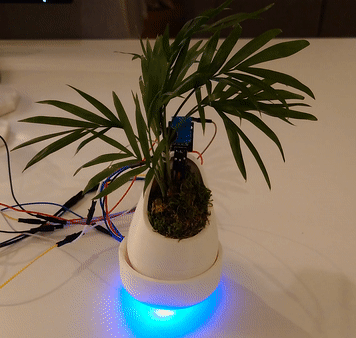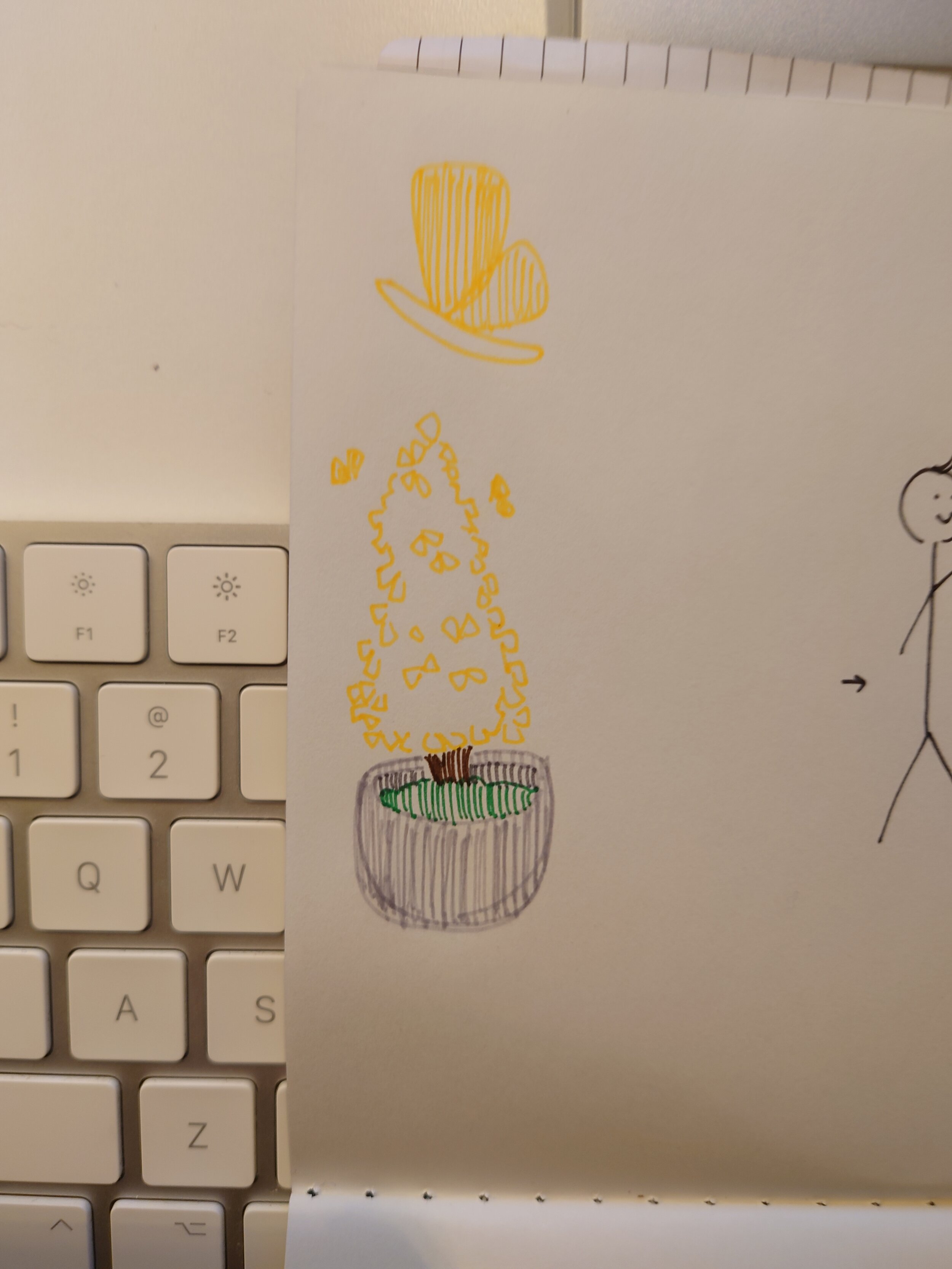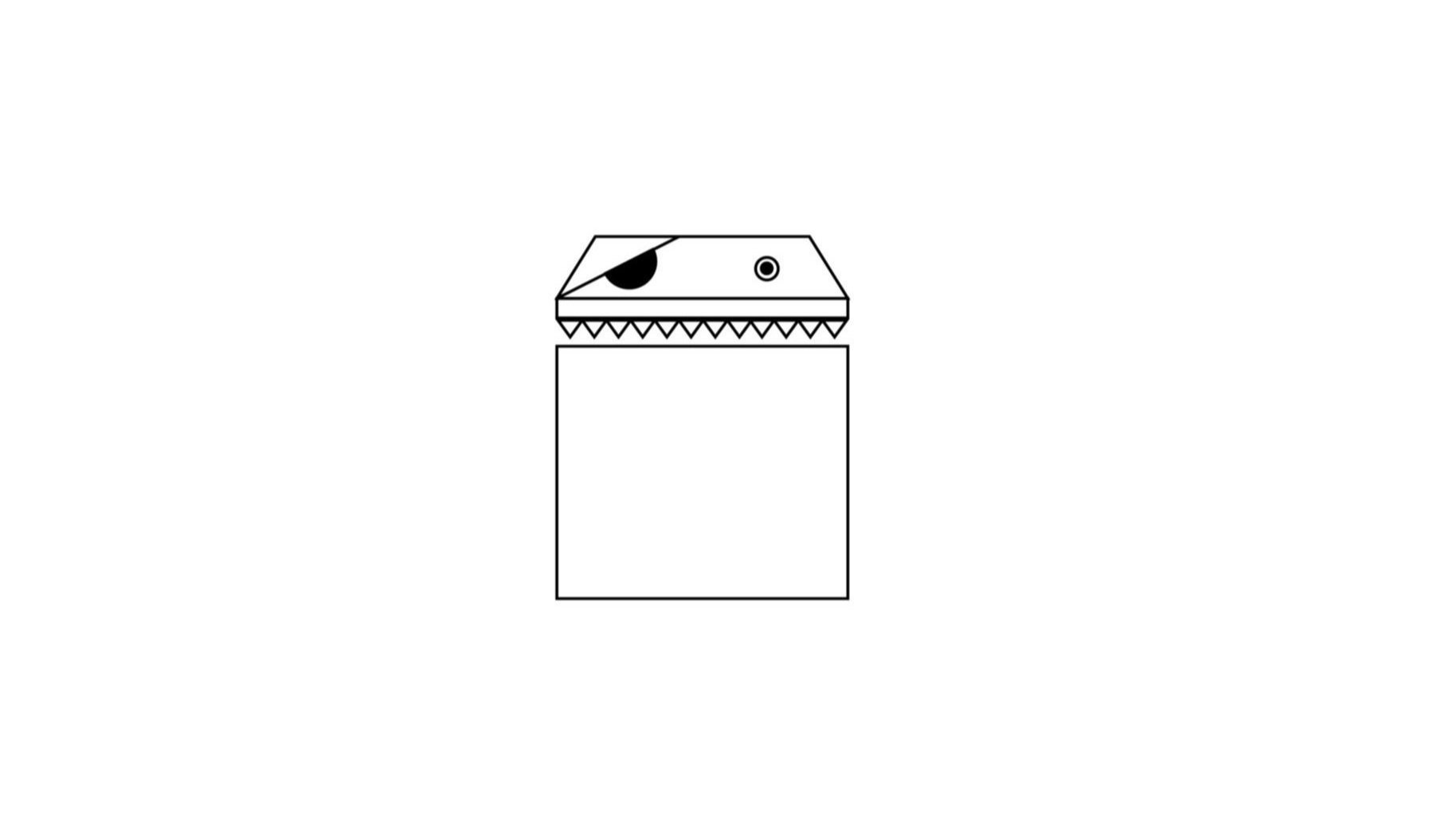Mossterpeace
Create a prototype based on the concept of “breath” using material exploration and reiteration.
Role
Product designer
Skills used
Raspberry Pi, Python, Rapid prototyping, Probes, Material exploration, User-centered design
Project
School
Year
2020
Time frame
9 weeks
TL;DR
/
TL;DR /
Download the slides
The background
Explore the concept of “breath” in interaction design.
Inspired by COVID-19-instigated isolation and turning to the often forgotten flora most of us have at home, we chose to focus on breath in human-plant interaction.
Talking to plants. Older generations often enjoyed this pastime of talking to plants.
(Ktena, 2018)
Plant growth. Vibrations from sounds can influence plant growth.
(Hassanien, Hou, Li, & Li, 2014; Cai, He, Zhu, & Wang, 2014; Wang, Shao, Lian, & Duan, 2004; Collins & Foreman, 2001)
Mental health. Greenery can provide benefits.
Stieg, 2020; Lee, Lee, Park, & Miyazaki, 2015; Toyoda, Yokota, Barnes, & Kaneko, 2019)
The problem
The current state of human-plant relationships are shallow and exist within the realms of one-sided caregiving.
The goal
Design and create an interactive terrarium that will foster mindfulness, and encourage more human-plant interaction, especially amid COVID-19-instigated loneliness.
The concept
We aligned on 3 concepts we wanted to incorporate in our design before starting our process:
Moving beyond caregiving. Encourage a rebuilding of the human-plant relationship and mindfulness through somaesthetics (i.e., the enjoyment and appreciation of all experiences, no matter how tiny).
(Shusterman, 2008)
Breath. Use breath as a tool, focusing on the symbiosis of human breath as a tool for plant growth.
Ways to connect. Discover ways to connect, especially during a time of disconnect.
The process
We followed the double diamond design process in this case to allow for ample exploration of a concept and its potential solutions.
Discover
Material exploration
With no direct breath sensor, the design process started with material exploration to examine which sensors could indirectly measure breath.
Through rapid prototyping, different actuators (i.e., yellow, green, blue single LED bulbs, LED strip, Raspberry Pi fan, mini vibration motor) were paired with a variety of material (e.g., matte plastic, clear glass, gummy candies) to better understand which actuators would achieve our goal of creating a responsive plant full of personality to foster an intimate human-plant relationship.
In the first “iteration”, a humidity sensor was paired with a LED light, with LED light brightness positively correlated with humidity percentage.
Testing the 3-pin humidity/temperature sensor revealed that temperature measurements were inaccurate; however, humidity measurements were sensitive and accurate, and could therefore be used.
Define
Probes
Probes were then sent out in order to guide the terrarium design, both in terms of vessel size and shape, and to determine where to place the sensors and actuators.
The results of the probes guided the “Mossterpeace” terrarium prototype design.
The probe-accompanying journals were designed with intimacy and casualness in mind – the text was a mixture of clean sans-font and personal handwriting, and the illustrations were hand drawn.
The journals gave participants a space to be vulnerable and jot their immediate observations and feelings, offering rich insight into not only the design, but also what might have felt strange or pleasurable about the human-plant interaction.
Probe results
2 “personality types” were discovered: “nurturing” and “meticulous”.
These 2 types affected human-plant interaction throughout the probe period; at the end of the 4 days, “nurturing” personalities seemed to emotionally bond with their plant, referring to their plant as a “he/she” rather than an “it” and feeling sad and reluctant about returning their plant. While “meticulous” personalities weren’t as enthused about – and felt awkward – talking to something that didn’t respond, though they were excited for the project results.
“I don’t want to return him. Do you have to take him back? It’s a ‘him’, you know. It doesn’t feel right to call him an ‘it’.”
“It felt really awkward talking to it because nothing would happen. I just felt like a crazy person talking to myself.”
Develop
Sketching
Based on the material exploration and probe results, we started sketching what a potential interactive plant pot could look like.
A smaller egg-shaped vessel afforded more embodied interaction through picking up, cradling, leaning towards, and whispering to the plant; thus a more intuitively intimate relationship.
Deliver
Prototype
Areas of heaviest interaction and shape of vessel were determined.
Doodles of participants and their probe plants indicated that certain areas were more heavily interacted with than others, indicating the locations that would afford the most intuitive interaction with the sensor and actuators.
The design
“Mossterpeace” is a terrarium consisting of a vessel containing flora sitting in a cupped base, made responsive through a copper tape circuit and humidity sensor that translates the humidity in human breath to responsive single LED lights and a mini vibration motor that rustles the leaves to bring the plant to life.
A yellow LED light is implanted at the base of the plant in the vessel. A blue LED light is attached to the base of the terrarium. The mini vibration motor is placed upright next to the plant to rustle the leaves. The humidity sensor is snaked through a small hole in the back of the vessel to be placed by the leaves, the area of heaviest interaction.
Artifact behavior
Resting state - Lack of human interaction
“Missing you.”
Day 1. Softly pulsating for attention
Resting state - Lack of human interaction
“Why don’t you love me anymore?
Day 2. More urgent pulsating for attention.
Resting state - Lack of human interaction
“Talk to me!”
Day 3. Furiously blinking for attention.
Active state - Conversation
“Hi there!”
When disconnected from the copper tape, the base LED turns off and the plant LED lights up.
Active state - Conversation
“I’m listening.”
LED brightens up gradually proportional to the humidity level.
Active state - Conversation
“I know, riiight?!”
Vibration after passing peak humidity as a “response”.
The intensity of the vibration is always set to the maximum after testing revealed that anything less would be too weak to create discernable rustling.
The duration of the vibration is random to replicate conversational nodding and confirmation.
Limitations
Always has to be connected to the Raspberry Pi.
Sensor and actuators aren’t hidden.
The humidity sensor reaction and feedback are slightly delayed.
Despite testing various actuators that would rustle the plant leaves, none achieved the “ideal” rustling (i.e., varied rustling, strong rustling).
Results & takeaways
We took the plant pot home to prove its effectiveness - we definitely feel more emotionally connected to our plants!
We were unable to test the validity of our hypothesis that vibration and LED lights were enough to mimic conversation, so we’ve come up with a few next steps and future directions:
Next steps:
User testing to understand how the artifact behaviors are received and interpreted.
Connect 2 different plants with each other over a network to interact-at-a-distance with other plant parents.
Hold more realistic conversations with the plant through added affects and movement.
Future directions:
Other sensors. Incorporate other sensors (e.g., light, distance) for a more comprehensive human-plant interaction.
“Plant" of robotic bugs art piece. An uncanny turn on plants.
Calming plant environment. Sit on a chair and activate a calming nature-sounds space.
Some key takeaways I’ve gained from this project are:
The designer may be designing for the “sake of others”, but users may not necessarily see it that way.
Human-plant interaction is complex because humans and plants live on different temporal planes. Plants might not be considered less expressive, but instead “alternately” expressive.
People like feedback. People want responses to their actions to know if they’re doing something right or wrong or not in vain.
Materials can guide the direction and design.
Perform small test throughout the process.
Participatory design during user research provides rich insights.
How’s it alive?!
I need more!
More projects

































